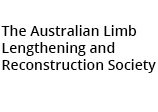Lower Limb Lengthening and Trauma Reconstruction
Limb lengthening (LL) is a reconstructive technique for lengthening and/or straightening of the deformed bone segments. It is usually performed in children who have limb length differences due to birth defects, disease, or injury.
Limb lengthening technique uses the principle of distraction osteogenesis, which refers to pulling the deformed bone to stimulate new bone growth through neovascularization. Limb lengthening has proven to be a very powerful and effective procedure.
Indications:
Limb lengthening is indicated in the following conditions:
- For the treatment of bone infections such as osteomyelitis and arthritis
- Dwarfism, to increase the length of the extremities
- Poliomyelitis, to lengthen the limb and correct deformities
- In cases of acute fractures, mal-unions and non-unions
- Correction of both congenital and acquired limb deformities
- Comminuted or segmental limb fractures
- Lengthening of foot and limb stumps
- Joint stiffness
Types of limb lengthening devices:
There are two types of devices available:
- External fixators: These are fixed externally to the bone using wires, pins, or screws.
- Internal fixators: These are positioned inside the body and lie on the bone or inside the bone marrow.
Evaluation and Diagnosis:
After reviewing your symptoms and medical history, your doctor will carefully examine your limbs to recommend you for limb lengthening procedure. Complete assessment involves few diagnostic studies such as X-rays and other advanced imaging reports.
Surgery:
The process of increasing bone length depends on regenerative ability of bone and tissue. In general, the rate of bone growth is 1 mm per day, when it is pulled apart. There are two phases involved in lengthening process:
- Distraction phase involves lengthening of the bone
- Consolidation phase includes hardening and calcification of the new bone
Procedure:
A customized apparatus is constructed by the surgeon as part of preparation for surgery. The apparatus connects to the affected bone with the help of wires or pins. Small incisions are made to gain access to the part of bone to be cut. A hospital stay of 1—3 days may be required after which rehabilitation and application of splints will be done.
Distraction phase: Bone lengthening begins a few weeks after surgery. You will be instructed to make adjustments to the apparatus four times a day. This phase is referred to as distraction phase, which produces tension between the bone fragments and stimulates the bone to grow back gradually into a complete but longer bone. In addition, X-ray and clinical examination are to be done every two weeks as a part of follow-up regimen.
Consolidation phase: Over a period of time, new bone fills in the gap and hardens the bone segments thereby increasing the length of the limb. No adjustments are made to the apparatus by the surgeon once the length and position of the new bone levels are met. This is the phase of new bone maturation and solidification. Once the bone is solid, the fixators are removed by the surgeon under anaesthesia. As a protective measure, a cast or splint is placed for a month. Cast is not placed when an internal fixator is used, as the implant placed internally by itself protects the bone.
Post-operative care:
The following are the guidelines to be followed after surgery to ensure a successful outcome:
- Make sure you get adequate rest. Avoid using the affected foot for a few weeks.
- Medications: Your doctor may prescribe medications to alleviate pain and inflammation.
- Weight bearing status: Crutches or a walker may be used to maintain balance or stability while walking.
- Physical therapy: You should begin appropriate exercises to stretch and strengthen the muscles.
- Eat a highly nutritious diet.
- Maintain regular follow-up appointments.
Risks and complications:
As with any major surgeries, there are potential risks involved. Complications that can occur following limb lengthening and include:
- Infection
- Excessive bleeding
- Blood clot formation in the leg– DVT (Deep vein thrombosis)
- Damage to blood vessels
- Nerve irritation or injury
- Muscle contractures and weakness
- Delayed union or non-union of bones
- Rare cases of over or under lengthening





















